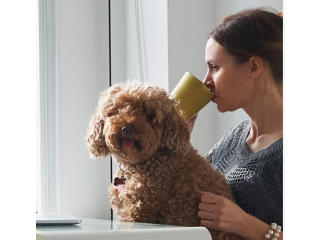Prototype manufacturers Private
5 years ago - Multimedia - Buffalo - 517 views Location: Buffalo
Price: $ --
| SLA prototype parts, SLA 3D printing service Upload your CAD files, receive an instant SLA 3D printing quote and get your parts into production in minutes. YI HITECH is the professional protype and low volume, and mass production run scenario to around world. What is SLA prototype Stereolithography apparatus (SLA) is an additive fabrication process that utilizes a laser to cure thin layers in a vat of liquid UV-sensitive photopolymer. SLA is the process of converting a liquid plastic into solid 3-dimensional objects using a stereolithography apparatus, or SLA machine. It was founded by Chuck Hull and 3D Systems back in 1986. It is the most widely used rapid prototyping technology. That can produce highly accurate and detailed polymer parts. It uses a low-power, highly focused UV laser to trace out successive cross-sections of a three-dimensional object in a vat of liquid photosensitive polymer. As the laser traces the layer, the polymer solidifies, and the excess areas are left as liquid. When a layer is completed, a leveling blade is moved across the surface to smooth it before depositing the next layer. The platform is lowered by a distance equal to the layer thickness (typically 0.003-0.002 in), and a subsequent layer is formed on top of the previously completed layers. This process of tracing and smoothing is repeated until the build is complete. Once complete, the part is elevated above the vat and drained. Excess polymer is swabbed or rinsed away from the surfaces. In many cases, a final cure is given by placing the part in a UV oven. After the final cure, supports are cut off the part and surfaces are polished, sanded or otherwise finished. SLA Prototype Advantage 鈥?High-quality models at relatively high speed 鈥?Accurate Prototypes 鈥?Wide Range of Finishing Options and Material Selection 鈥?High Quality Finish with Fine Details 鈥?Ease of Finish, Paint and Bonding 鈥?Quick Cast and Master Patterns for vacuum Casting 鈥?No Size limitation 鈥?Section and Bond Large Parts Together 鈥?Economy of Scale SLA prototype Applications 鈥?Fit/form, proof of concept prototypes and engineering verifications 鈥?Investment Casting Patterns 鈥?Rapid Tooling, Jigs & Fixtures 鈥?Designer models, snap-fit assemblies 鈥?Marketing Samples, Scale & exhibition models 鈥?Optics, transparent covers 鈥?Molds & casting patterns 鈥?High Surface Finishes 鈥?Heat Resistance 鈥?Moisture Resistance 鈥?Clear Finishes 鈥?Bio-Compatibility Available SLA prototype material selection Below is a list of our standard materials for SLA 3D printing. To instantly compare material prices, just give us an email or online service. Resin typeDescription Standard resinHigh-detail resin that produces parts with a smooth, injection mold-like surface finish. It is brittle and used for non-functional parts. Clear resinHas a semi-transparent appearance Tough resin (ABS-like)Has properties of ABS and produces parts with improved mechanical properties compared to standard resin. Can be used for functional parts. Durable resin (PP-like)Semi-flexible, ideal for snap fit assemblies and high-detail durable prototypes. Rubber-like resinRubber-like feel and shore hardness < 70A that can be compressed and bent. Lacks the performance of true rubber. Heat-resistant resinHas high strength and stiffness and excellent temperature resistance. Castable resinHigh-detail resin used to produce patterns for investment casting. They burn out cleanly with no ash or residue. SLA Prototype Finishes SLA models can be post-processed for varying levels of finish. SLA prototype can be finished and decorated to provide an accurate visual representation of the part. 鈥?Quick Finish, Support Removal Only 鈥?Bead Blast Finish, Sand Support Areas & Sandblast 鈥?Smooth Finish, Sand polish to Smooth (Build Lines may be Visible) 鈥?Paint, Sand/Remove/Fill All Build Lines & Primer 鈥?Painted Finish, Sand/Remove/Fill All Build Lines, Primer and Paint/Mask/Texture as Needed 鈥?Mold Ready Finish for Master Patterns: Sand/Remove/Fill all Build Lines on Interior & Exterior, & Primer 鈥?Quick Cast Finish, Remove all Excess Resin from Interior Honeycomb 鈥?Quick Clear Finish, Support Removal & Clear Coat 鈥?Level 3 Clear, Wet Sand Parts Smooth & Clear Coat (Build lines and Small Defects may be Visible) 鈥?Supreme Clear,Wet Sand Parts Removing all Build Lines, Clear Coat & Buffing 鈥?Supreme Clear with Color Dye,Wet Sand Parts Removing all Build Lines, Clear Coat, Dye Color & Buffing 鈥?Metal Finish: Level 2 with Primer & Plated with Chrome, Nickel, Brushed Nickel, Gold or Other Design guidelines for SLA prototype The table below summarizes the recommended and technically feasible values for the most common features encountered in 3D printed parts. FeatureRecommended size Tolerance卤 0.15 mm (卤 0.006") Unsupported walls1.0 mm (0.0393'') Supported walls0.5 mm (0.0197'') Minimum feature size0.2 mm (0.00787'') Minimum hole diameter0.5 mm (0.0197'') Minimum escape hole diameter4.0 mm (0.157'') Minimum Wall Thickness0.63 mm (0.025'') Insertsinstall in Post-Processing with AdhesivesPrototype manufacturers website:http://www.yi-hitech.com/prototype/ |
|---|
















